Longitudinal effects of independent walking on postural and object experiences in home life
John M. Franchak1, Kellan Kadooka1, & Caitlin M. Fausey2
1University of California, Riverside
2University of Oregon
Walking augments exploration
Walking independently lets infants:
Take more steps and spend more time in motion (Adolph et al., 2012)
See distant objects and locations (Kretch et al., 2014)
More easily carry objects (Karasik et al., 2011, 2012)
- These benefits suggest that walking ability facilitates developmental cascades (Oudgenoeg-Paz et al., 2016; Walle & Campos, 2014)
Motor devel. ➝ object exploration
Sitting > Supine/Prone (Soska & Adolph, 2014)
Motor devel. ➝ object exploration
Crawlers > Walkers (Herzberg et al., 2021)
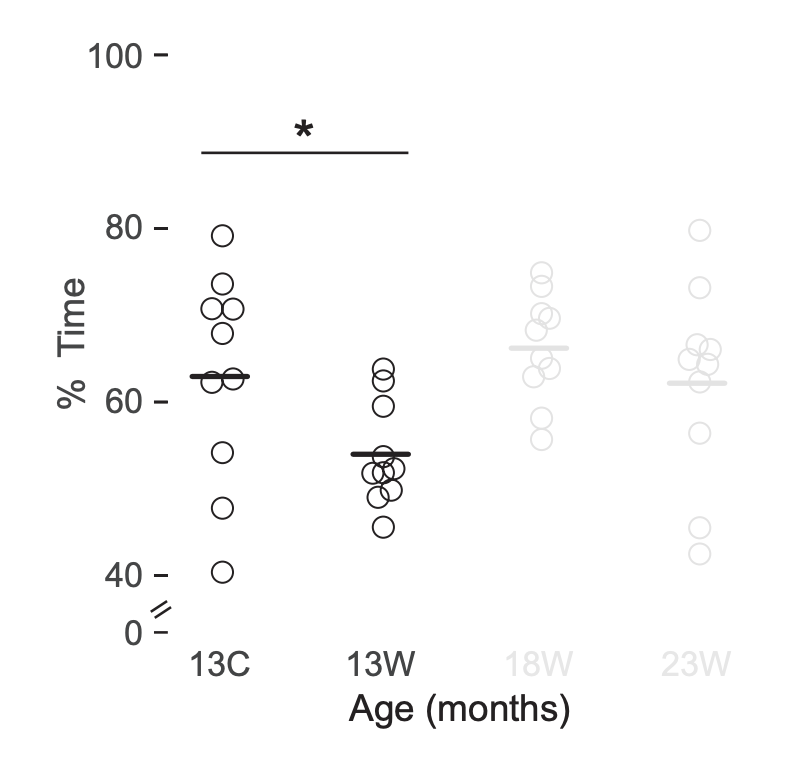
Characterizing opportunities for learning
- Skills only matter if they’re used…
Brief lab or home visits miss the potential moderating effect of daily routines (e.g., playing, feeding)
Video observation may bias infant and caregiver behaviors (Bergelson et al., 2019; Tamis-LeMonda et al., 2017)
Ecological Momentary Assessment
Prompt caregivers to observe infant behavior in brief phone surveys multiple times per day (Franchak, 2019)
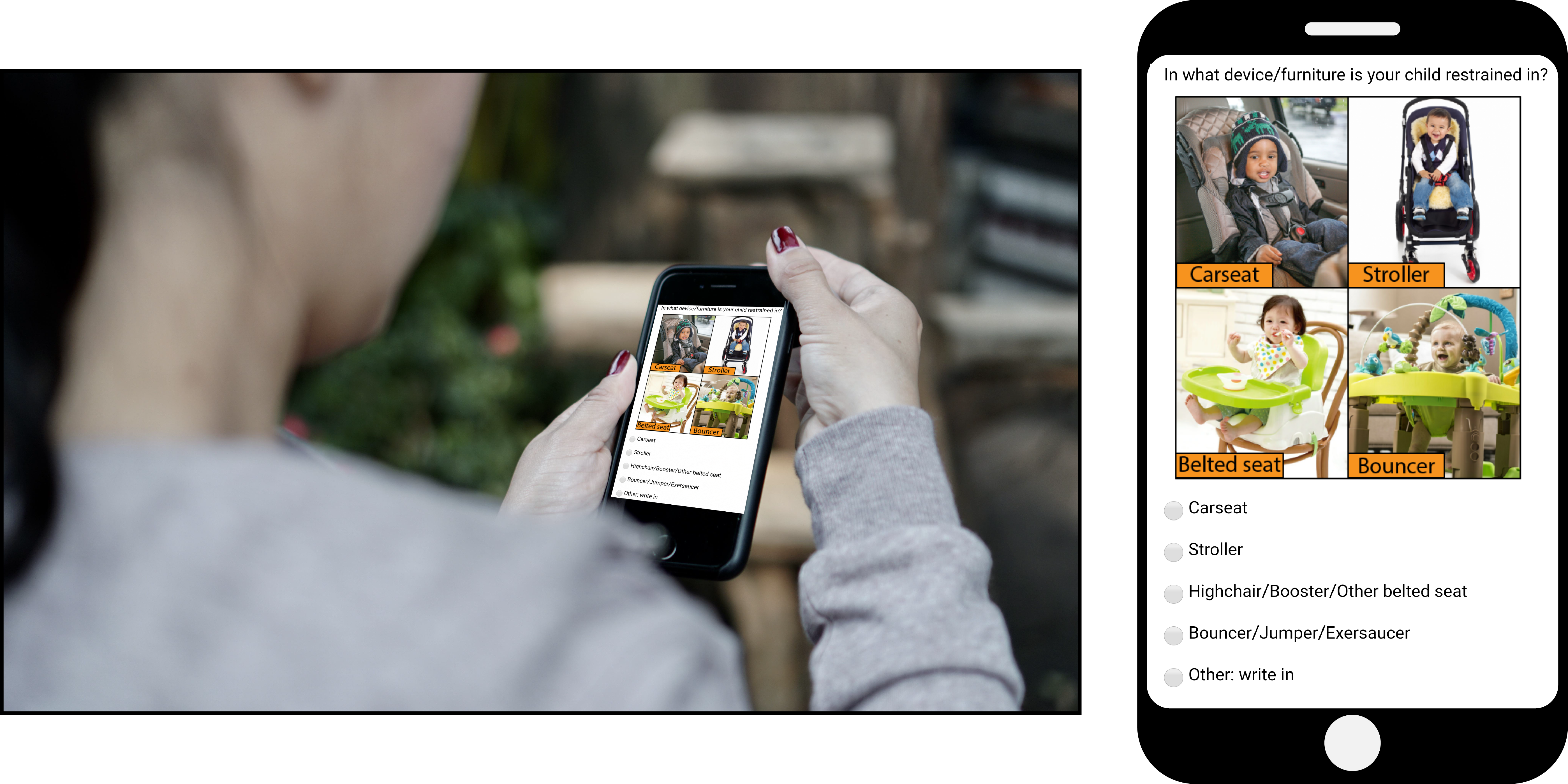
Aims of current study
Longitudinal EMA sampling from 10-13 months to:
Assess how the emergence of walking alters time spent in different body positions and time spent restrained by furniture/caregivers
Determine how everyday object holding changes based on infants’ body position and restraint
Capturing full-day experiences
Capturing full-day experiences
Participants
- Scheduled sessions at 10, 11, 12, and 13 months (± 1 week)
- N = 62 participants (34 female) contributed M = 3.6 sessions, responding to M = 28.3 samples/session
| Session | # Infants | Min | Mean | Max |
|---|---|---|---|---|
| 10 | 52 | 9.71 | 9.98 | 10.31 |
| 11 | 57 | 10.76 | 11.01 | 11.34 |
| 12 | 58 | 11.78 | 12.00 | 12.32 |
| 13 | 54 | 12.70 | 13.00 | 13.34 |
Participants
Families recruited from 29 US states
| Ethnicity | N | % |
|---|---|---|
| Hispanic or Latino | 11 | 17.7 |
| Not Hispanic or Latino | 51 | 82.3 |
| Race | N | % |
|---|---|---|
| Asian | 1 | 1.6 |
| Black Or African American | 1 | 1.6 |
| More Than One Race | 7 | 11.3 |
| Other | 7 | 11.3 |
| White | 46 | 74.2 |
Samples reflected in-the-moment behavior
Response time = time between text and completing the survey
Responses had to be made within 15 minutes
Response time median = 0.5 minutes
84.2% of texts were responded to within 1 minute

Samples were distributed across the waking day

Samples were distributed across the waking day

Measuring body position and restraint
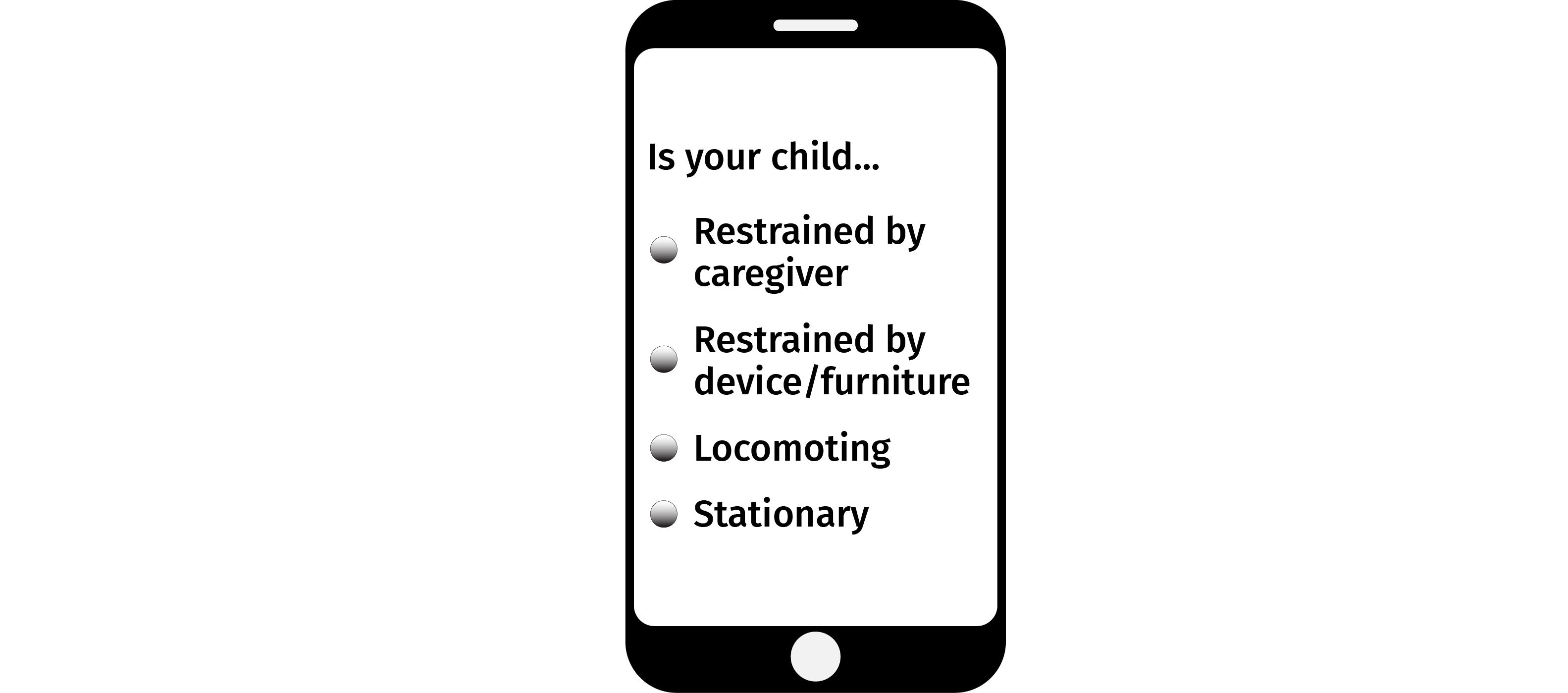
Measuring body position and restraint
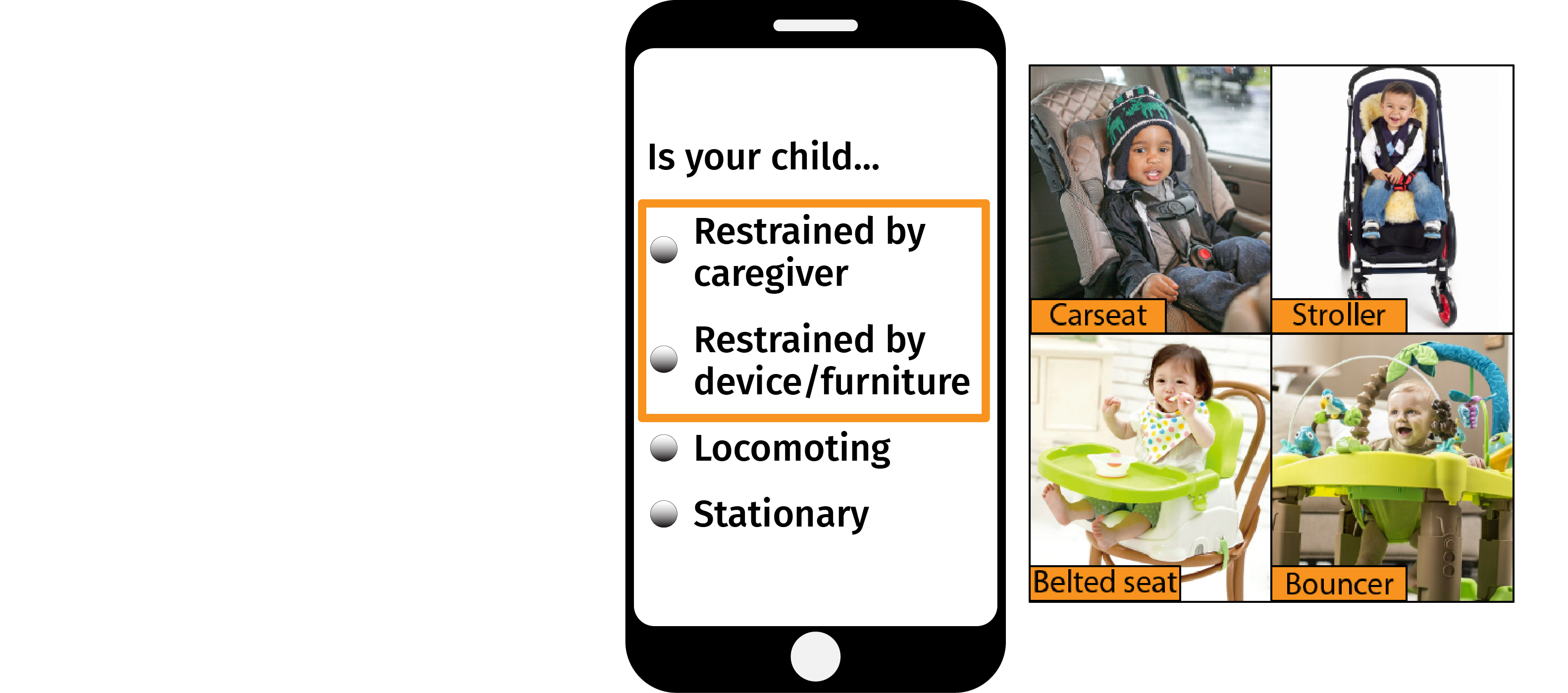
Measuring body position and restraint
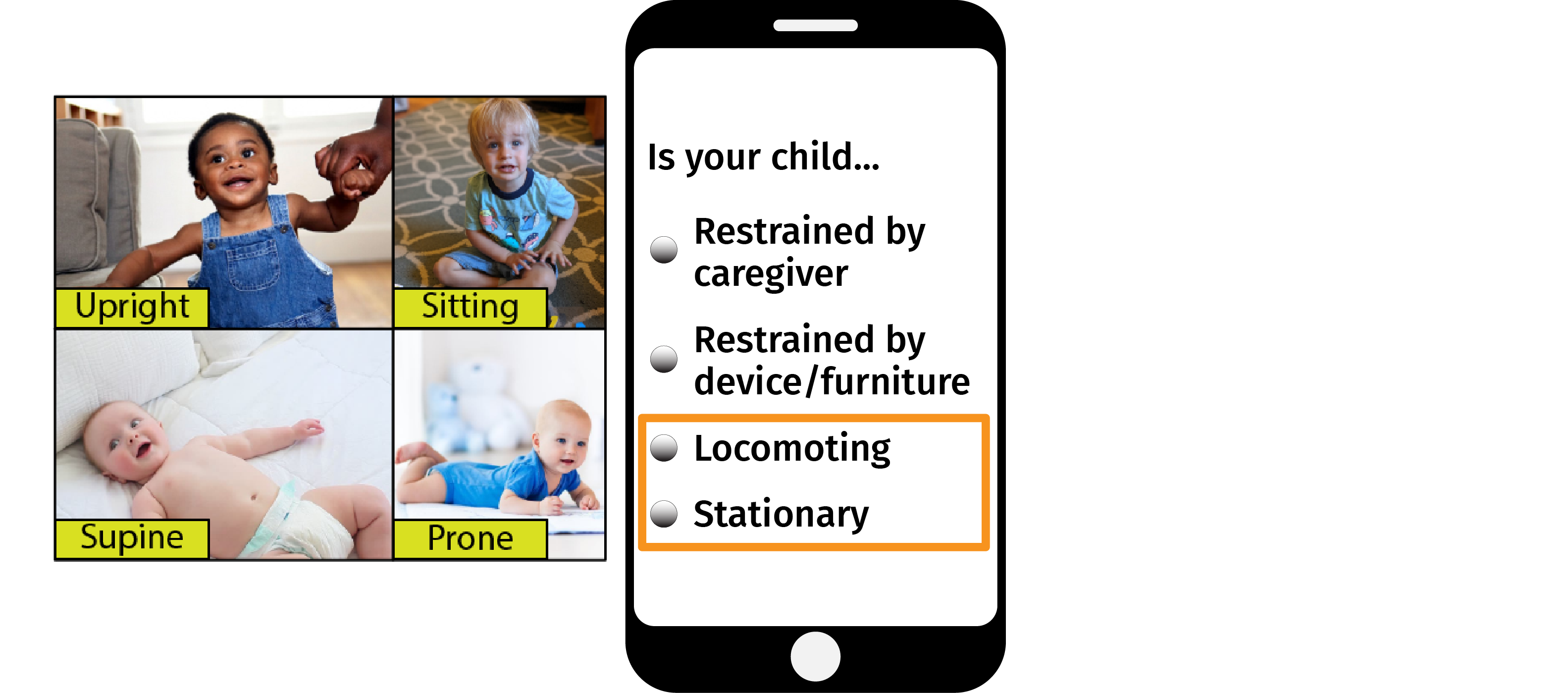
Measuring body position and restraint
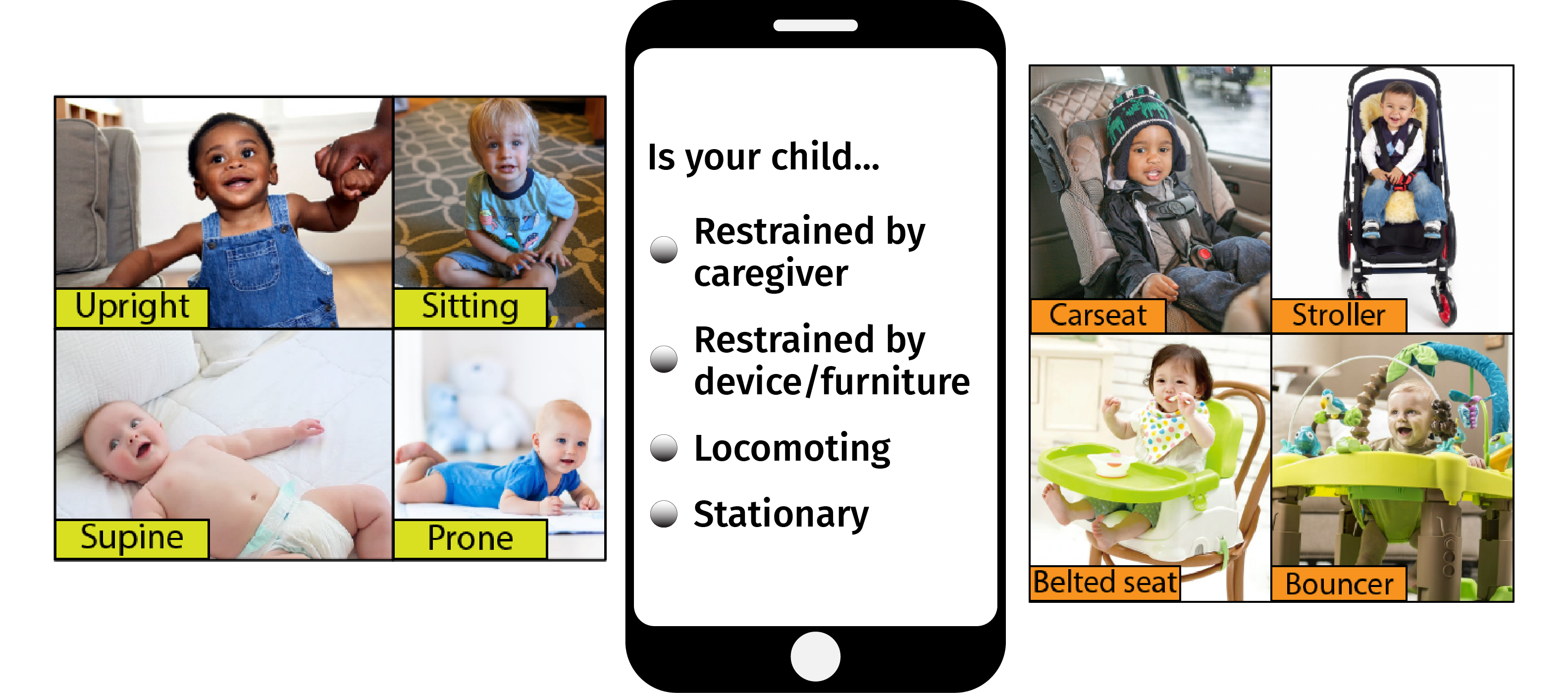
With age, prone decreased and upright increased

How did walking alter daily experiences?
After each session, a structured phone interview determined whether the infant had begun walking
Infants were considered walkers if > 25% of their samples in a session occurred on or after their walking onset date
| Session | Walking | Not Walking |
|---|---|---|
| 10 | 3 | 49 |
| 11 | 8 | 49 |
| 12 | 17 | 41 |
| 13 | 25 | 29 |
No difference in supine by age or by walking

Prone time decreased by age and walking status

Non-walkers sat more than walkers regardless of age

Upright time increased with age and with walking status

Restraint decreased with age/walking
Restraint time decreased from 49.6% at 10 months to 41.1% at 13 months
Non-walkers were restrained more frequently (M = 48.2%) than walkers (M = 38.9%)
Daily object holding experiences
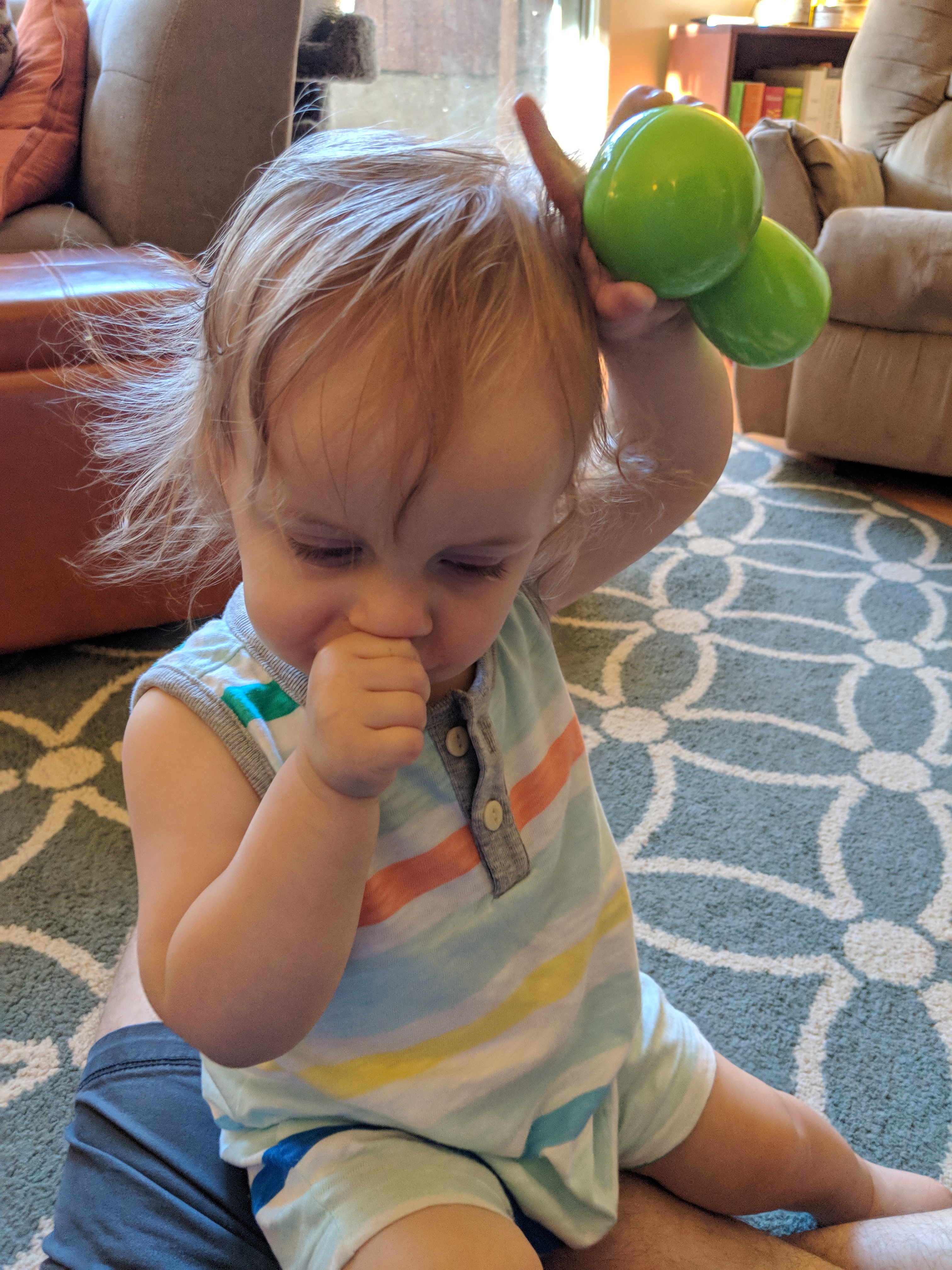
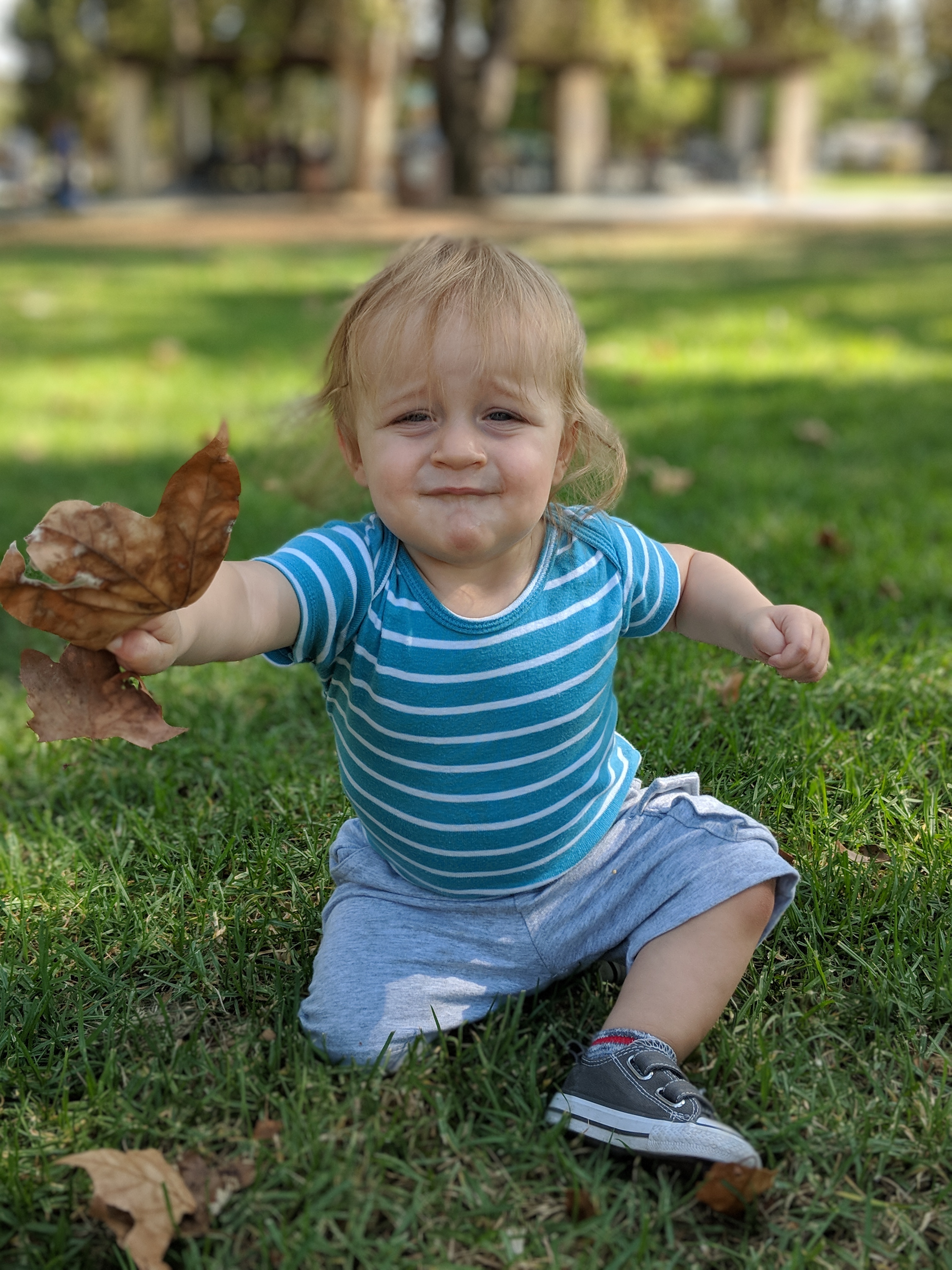
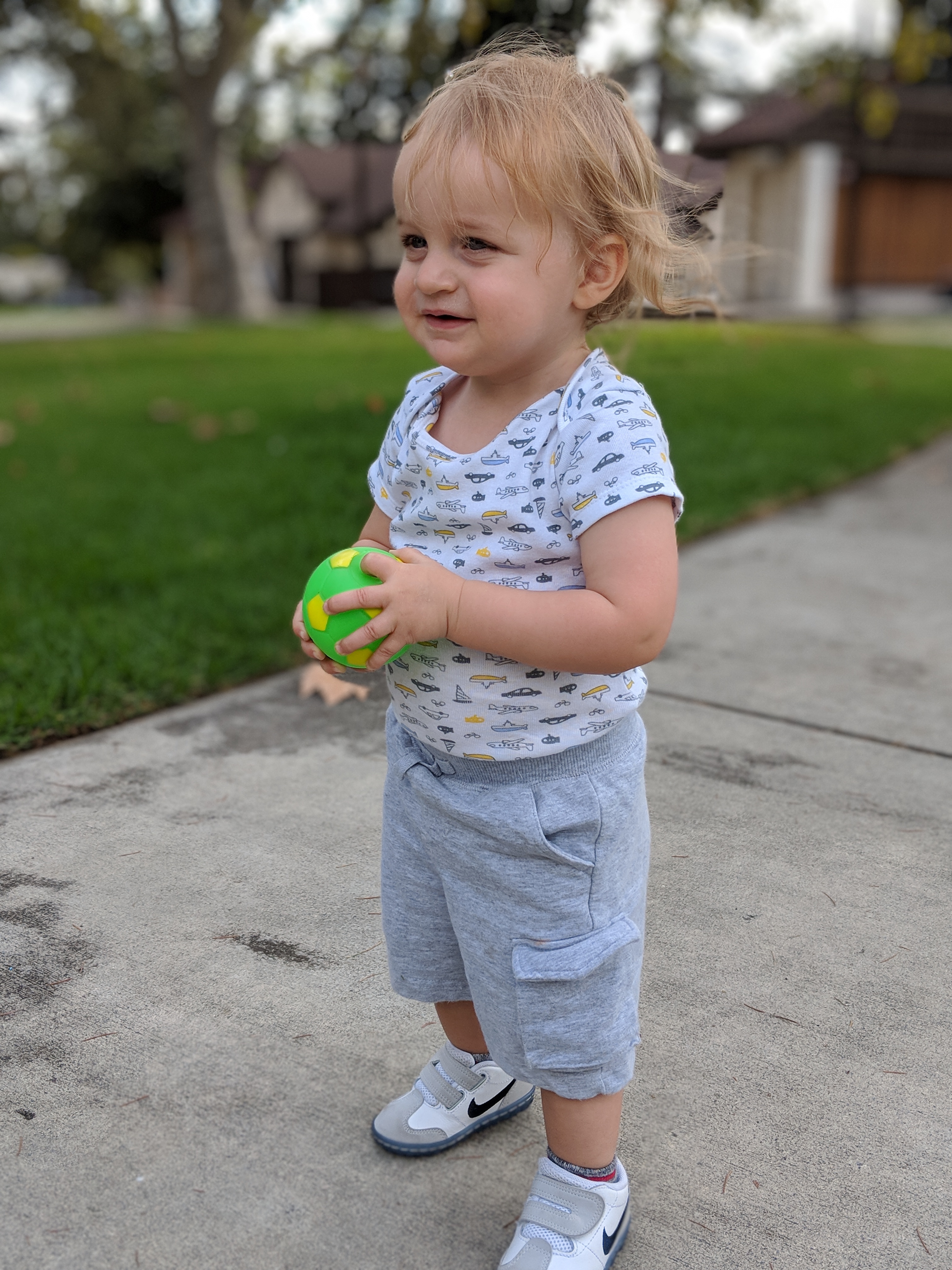
Infants held objects 40.4% of the time—roughly 4.5 hours each day, based on an 11.1-hour waking day (Galland et al., 2012)
What proportion of sitting time did infants spend holding objects?


Body position and restraint moderate object experiences in the moment


Body position and restraint moderate object experiences in the moment

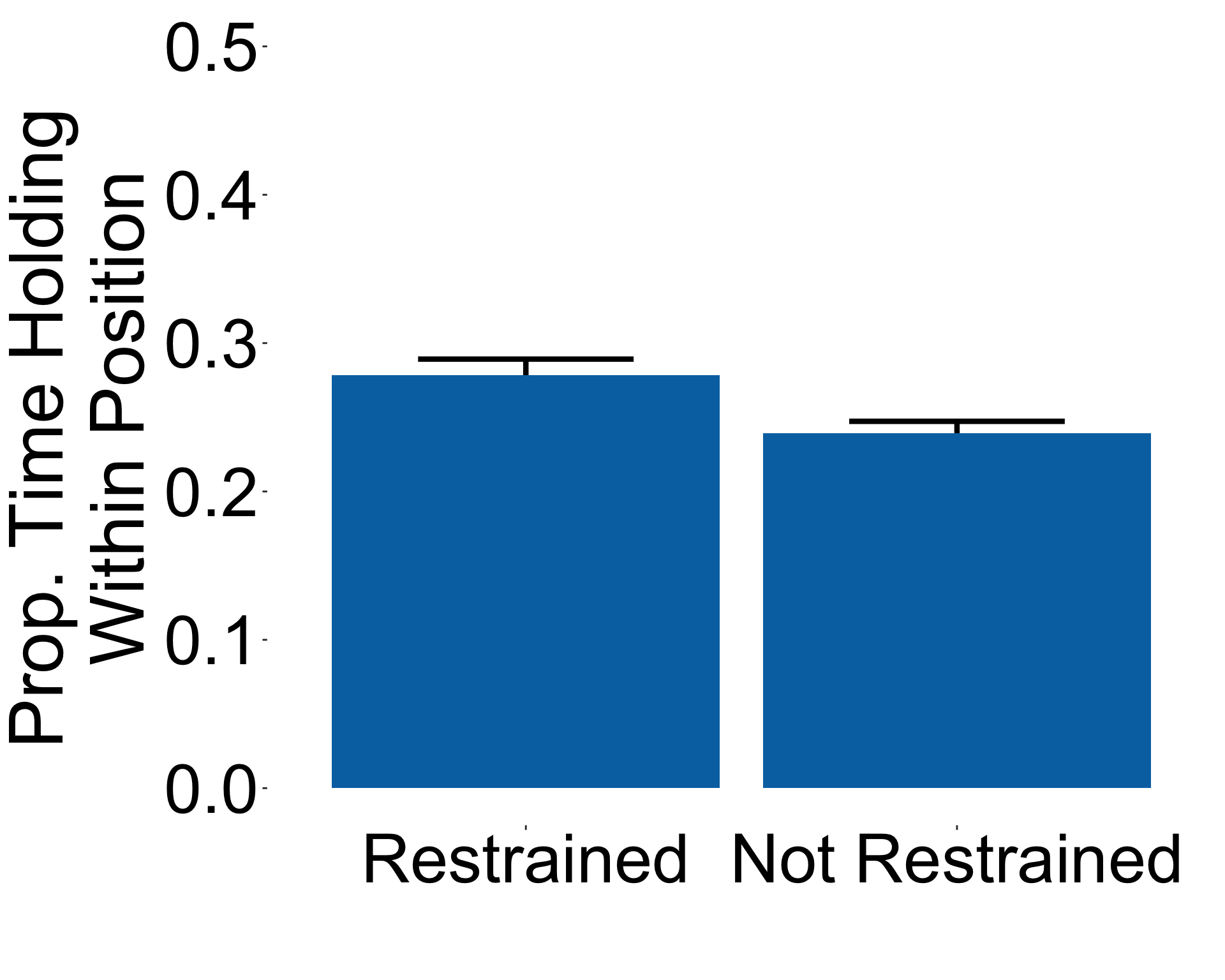
Two possible effects
- Overall change in holding: Walk onset ➝ decreased time sitting ➝ decreased overall-object-holding-time
- Holding adapts to motor context: Walk onset ➝ decreased time sitting ➝ upright-object-holding-time increases while sitting-object-holding-time decreases
Walking infants integrate object holding into new time spent upright

Walking infants integrate object holding into new time spent upright

Summary: What experiences change over development?
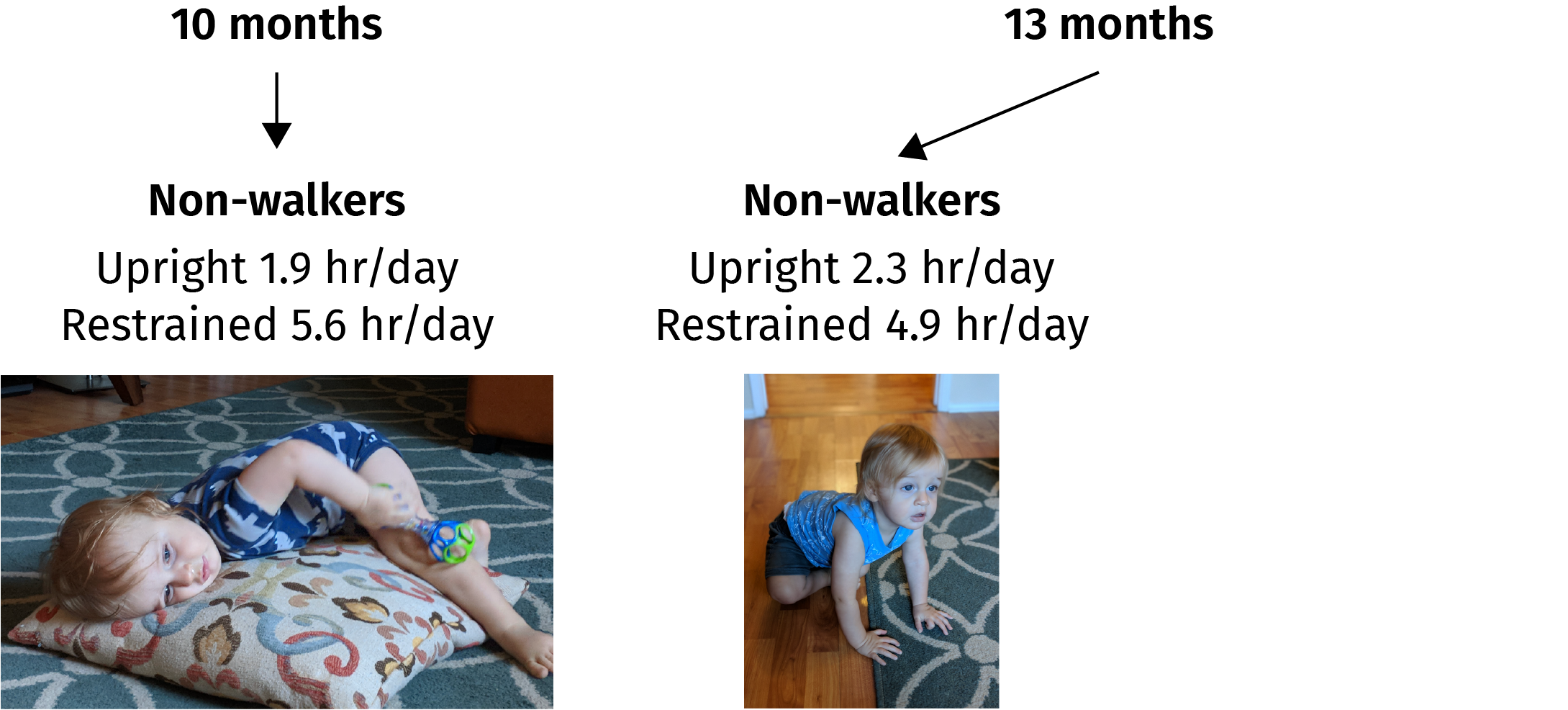
Summary: What experiences change over development?
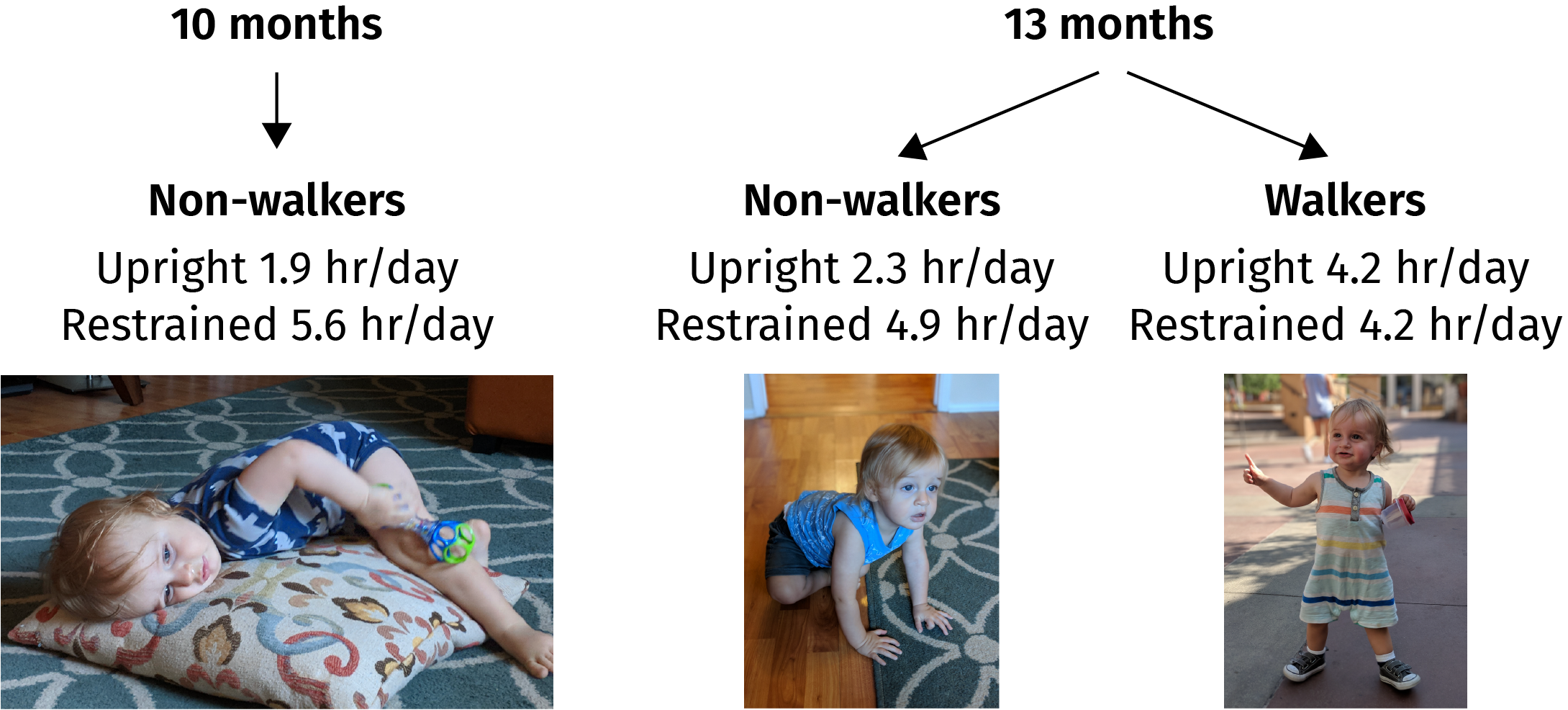
Summary: What experiences change over development?

Non-walkers hold…
3.2 hrs/day while sitting
0.7 hrs/day while upright

Walkers hold…
2.1 hrs/day while sitting
1.8 hrs/day while upright
Conclusions
- Effects at multiple timescales
Conclusions
Effects at multiple timescales
Dissociable effects of age and walking ability
Conclusions
Effects at multiple timescales
Dissociable effects of age and walking ability
Multiple drivers of change
Acknowledgments
Data Collection Team
Chase Butler
Madelyn Caufield
Ariana Diaz
Juelle Ford
Tasnia Haider
Sasha Kapadia
Preet Kaur
Vanessa Scott
Funding
NSF BCS-1941449
UCR Regents Faculty Award
